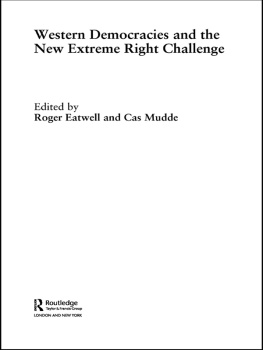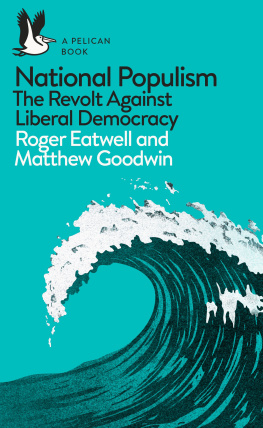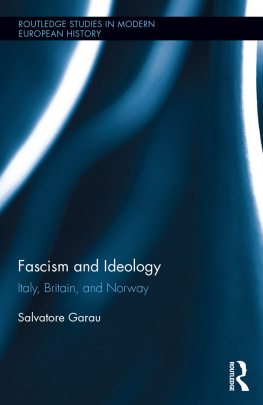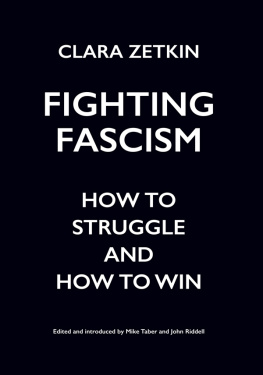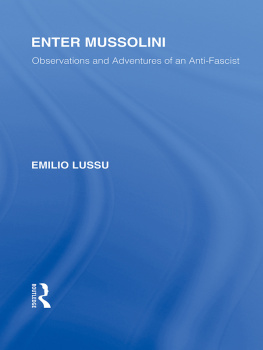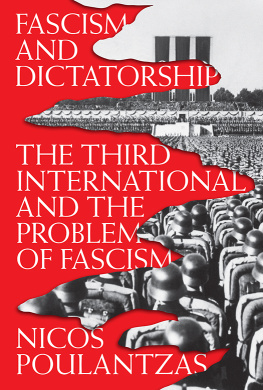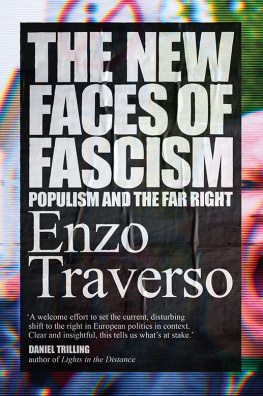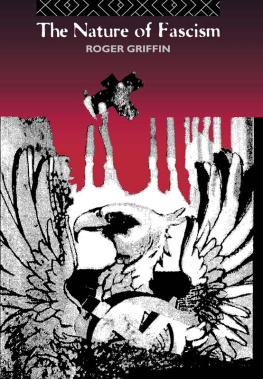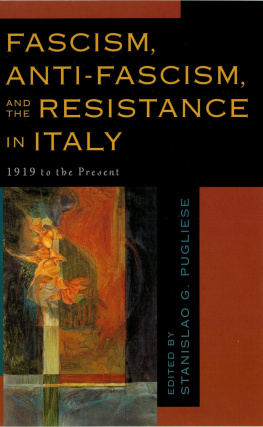Contents
Fascism
A History
Roger Eatwell

About the Author
Roger Eatwell is Professor of European Politics at the University of Bath. He has published many articles and several books on politics and fascism. He has contributed to programmes on Radio 4 and the World Service, and has advised and appeared on television programmes on fascism. He is married and has two children.
About the Book
Fascism is one of the most destructive and influential political movements of the twentieth century. Its imagery of mad dictators and nihilistic violence haunts our imaginations, and its historical legacy is almost too momentous to be understood. At the same time it is curiously elusive: how do we define fascism? What is the basis of its appeal? Why did it take root so successfully in Germany and Italy, and not in France or Britain?
Fascism: A History a sweeping, enthralling study tackles theses questions, and considers fascism in the round. It draws together its different strands, in Italy, Germany, France, and Britain, looking at its evolution up and during World War II; and it assesses post-war fascism, and examines its future in a Europe whose boundaries continue to change. Along the way, Fascism provides vivid portraits of Mussolini, Hitler, Oswald Mosley and other key figures within the movement. Lucid, dramatic, challenging, Fascism is a definitive book of its kind.
The Birth of Fascist Ideology
i
ON OCTOBER 29, 1932, a great exhibition opened in Rome to celebrate the tenth anniversary of the first fascist revolution. At the heart of the exhibits was Room R, a reconstruction of the newspaper editorial office that had been home to Benito Mussolini during the rise of fascism. Above, in great letters, was the word DUX (leader) and the dates 19191922a reminder that it had taken just three years for Mussolini to move from founding a new political movement to the center of power. Flanking these inscriptions were two slogans: BELIEVE, OBEY, FIGHT and ORDER, AUTHORITY, JUSTICE the Holy Trinities of the new order that had replaced the hated liberal democratic system.
The Italian fascist movement was built on catechisms. Its early activists often adopted the slogan of the black-shirted wartime shock troops, I dont care a damn, which was written in blood on their bandaged wounds as a badge of pridea trophy of their many battles with the hated Bolshevik enemy. After the destruction of the left-wing and other opposition political parties during 19225, Italy was to become a gigantic hoarding site, pasted with slogans such as: WAR IS TO MAN AS CHILDBIRTH IS TO WOMAN and BETTER TO LIVE ONE DAY AS A LION THAN A HUNDRED YEARS AS A SHEEP.
It is easy to understand why fascism is widely seen as little more than a nihilistic, authoritarian, and violent movement that is best comprehended in terms of psychology rather than rational thought. It is also easy to see why what is arguably the most influential academic definition of fascism stresses its style (such as its emphasis on leadership and propaganda) or its negations (like its hostility to communism), rather than its positive intellectual content.thinkers and can truly be considered ideologies. Fascism seems devoid of an intellectual pedigree, little more than a ragbag of authoritarian and nationalist slogans.
All too easy, but all too wrongfor in truth fascism was an ideology just like the others. As such, it needs to be identified in terms of a body of ideasnot simply in order to clarify what can truly be termed fascist, but to help understand why fascism could have exerted such a fatal appeal to intellectuals as well as to violent activists, to those who were seeking to become part of a new community as well as to those who were motivated by personal economic concerns. Ideas matter in politicsthey inspire and shape action, take on a concrete force.
This does not mean that fascism in practice necessarily mirrored the ideology. There is a sense in which fascist movements and regimes departed significantly from the ideological roots. Although the activist and more emotive side of the fascist style of thought involved clear dangers, it did not necessarily lead to brutal dictatorship and genocidal practice (in the same way that Marxism did not necessarily lead to Joseph Stalin and the Soviet terror, though flaws in Marxist ideology posed similar dangers). Fascismlike all serious ideologieshad a vital core, but in 1919 it was in its infancy rather than fully developed.
ii
In order to trace the birth of this fascist ideology, it is most fruitful to begin by looking briefly at the Enlightenmentthe great intellectual movement that swept over eighteenth century Europe. It ushered in the era of modernity: the belief that destiny could be shaped, that life was not simply determined by the forces of fate, luck, or God. The Enlightenment celebrated the power of reason and science over the previously dominant monarchical or religious authority. It heralded a new form of democratic politics. After the French Revolution of 1789, Sovereignty of the People, rather than the Divine Right of Kings, was the new liturgy. And material progress, rather than spiritual development, became the primary social goal. With this new politics came new forms of political shorthandwith the left representing the forces of progress, and the right defending the preservation of the past.
Initially, progressive ideas were most clearly encapsulated in liberal ideology, with its emphasis on individualism and the related political doctrine of the limited, constitutional state, and its economic philosophy of laissez-faire. Such views were to become anathema to fascists, who believed that they made the alienating pursuit of money the main focus of life and created a dangerous division between classes and between government and people. By the late nineteenth century, socialism had taken over from liberalism as the main progressive ideological force. There were more points of contact between this ideology and fascism, but most of the central tenets of socialism were similarly rejected by fascists. This was especially true of the more radical forms of socialism, which opposed all private propertyor which, like liberalism, proclaimed the existence of a common humanity and sought some form of universal culture.
In this sense, fascism was a negation of the Enlightenment, part of a counterrevolution that rejected the basic assumptions of modernity. The Enlightenment, however, also gave rise to other radical ideas, especially the belief that violence might be necessary to purge the existing order, and that only a mass-based form of politics could incorporate the will of the peopleideas that fascism was clearly to echo. Paradoxically, in terms of ideas, fascism was both a product of the Enlightenment and a reaction to it. This can be seen by considering some of the men and movements who have been cited as ideological antecedents of fascism by the handful of academics who have accepted that fascist ideology had some form of intellectual core.
The finger has been most often pointed at the eighteenth-century Swiss political philosopher and polymath Jean-Jacques Rousseau.emphasis on homogeneity was very different from liberal thought, which tended to stress pluralism and checks and balances. But the most dangerous aspect of Rousseaus thought was the belief that people might not always perceive the true general will. This meant there might be occasions when they would need to be forced to be free. In such views, some have seen the seeds of elitist dictatorship (both communist and fascist). Yet it would be misleading to portray Rousseau as the first fascist. His general body of thought was multifaceted, and there were other central elements that were very different from later fascismmost notably his emphasis on universal rules applying to all peoples.
Next page

